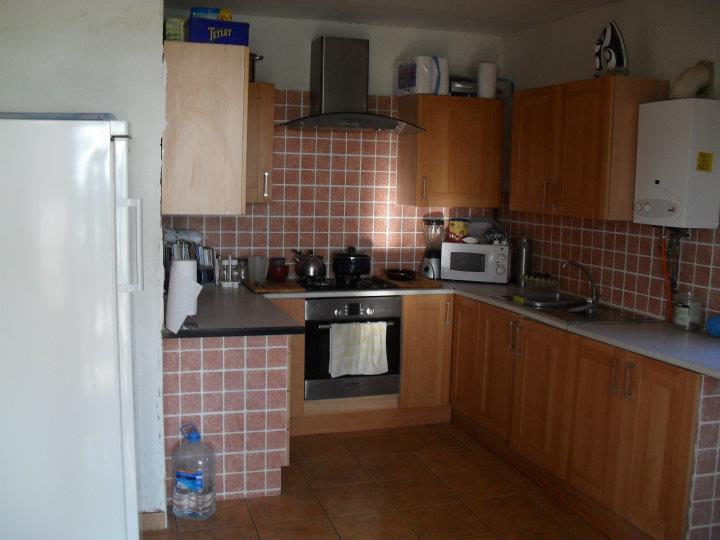When we first bought the house we went out an bought 3 plastic bins to enable us to continue our recycling of rubbish from the shopping we bought. We were amazed at how much rubbish we bought. The 3 bins were being emptied every week so we decided to try to buy less packaging.
As we went along and began planting seeds we began to use the plastic containers as seed trays. We started to keep them for this purpose. We also used yogurt pots to plant the runners of strawberries. When they had rooted we could cut them off and plant them where we wanted them.
When we planted seeds outside we needed to keep the birds away, so we used plastic bottles on metal poles. The wind blowing the bottles made a rattling noise and the birds will not go near it.
When we planted the trees we used 2 litre plastic bottles as watering aids. We buried them right next to the root ball. This had 2 advantages for us 1. we could measure the amount of water each tree received, 2. the water went directly to the roots. The only problem that we have found with this method is that sometimes the neck of the bottle gets blocked and we have to bang it out with a metal pole.
We have also used plastic bottles as green houses over seedlings in the garden. These work fantastically and allow us to plant seedlings out earlier. They keep the frost off the plant and recycle the water evaporated by condensing it on the inside of the bottle.
A Spanish friend told us about using plastic bottles as fly catchers. Since we suffer in the summer with a massive amount of flies we decided to give it a go. Using a plastic bottle you burn 4 small holes in the neck of the bottle. Place in a small amount of water and some uncooked meat...we used chicken feet. Then hang outside. Within 2 days the bottles were full. We hung them all around the garden and just kept topping them up with a little water as the summer moved on.
This years plan is to make a plastic bottle greenhouse. http://ana-white.com/2011/04/plastic-bottle-green-house-build-guide We are in the process of asking all our friends to save their bottles for us. We will let you know how we get on.
Next was glass. We knew we wanted to make wine and so saved all the wine bottles that we bought. We store them in the shed until we want them. This way we only have to buy the corks for them. We made a conscious decision to buy bottled beer too, as Kev wants to make it. All we will need to buy are the caps.
We save all jars so that we can bottle things. I have made jams, chutneys, sauces, pickles and stored them all in old jars. Again we tend to purchase things in jars rather than plastic bags just for this purpose. This year we want to bottle more fruits and vegetables. We have asked friends to save their glass jars for us too.
Then comes paper. We used paper and cardboard to help light the fires in the winter. Any boxes that we have deliveries in are stored for this purpose.
I have made paper seed pots from newspaper that we plant seeds in. We have found these do not disturb the roots when planting out so giving the seedling a better start in life. http://www.greenlivingexperiencespain.com/information/making-paper-seed-pots
There are downloadable instructions on this page for the paper pots.
We also use toilet roll tubes for seedlings too. We fill them with compost, plant the seed and when the time come plant out in the garden. The tubing rots down and the roots spread.
We then went one step further on the recycling quest without even realising what we were doing really. We needed a kitchen and a friend knew someone who was selling one. For speed we bought it and within a week it was fitted. We bought new worktop and the tiles but from local sellers to keep our money in the community.
 |
| Recycled kitchen |
We had another friend with a second hand wood burning stove. He was going to take it to the tip so we bought that from him and cleaned it up.
As we went along our journey and tried to do more things reusing materials came in very handy when we needed things fast.
I wanted to make hard cheese and we needed a cheese press. So this was made and it actually works very well but the cheeses are small.
You add the bricks for the pressure. We worked out that about 4 bricks is the right pressure to press a small cheese. I have not bought any for at least 2 years now as I make all my own.
Then we wanted to make bigger cheeses. Kev made the cheese press mark 2 and this makes about a 2kg cheese and again works brilliantly.
This is just a few of the things that we have done in the last 3 years. We now have next to no rubbish to go in the bins. The only thing is plastic bags, the little clear ones that you get from the fruit shop. We think we have now found a use for them too but that is another story.












































.jpg)





